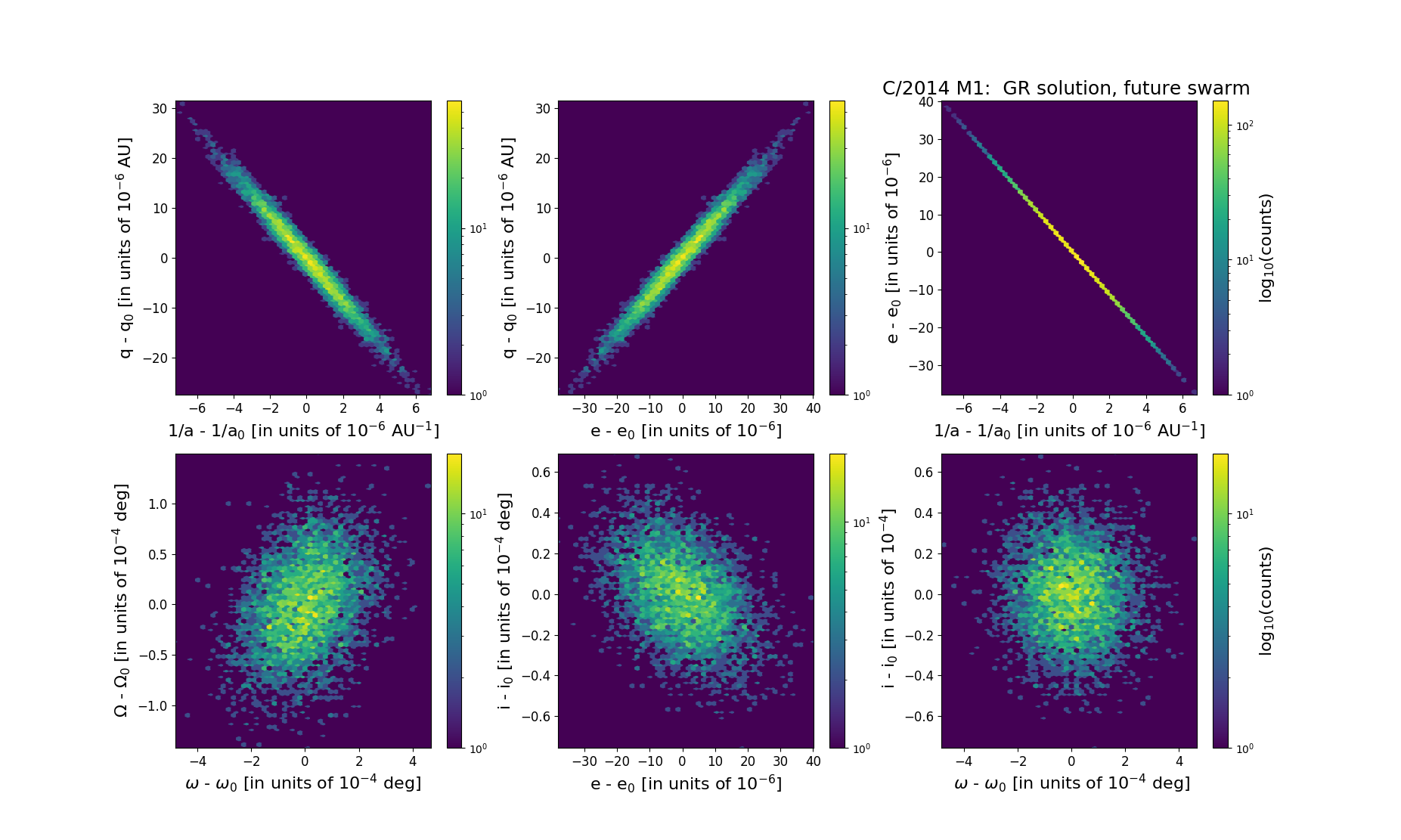C/2014 M1 PANSTARRS
more info
Comet C/2014 M1 was discovered on 24 June 2014 with Pan-STARRS 1 telescope (Haleakala), that is more than a year before its perihelion passage. This comet was rather rarely observed during four oppositions until 7 March 2017.
Comet had its closest approach to the Earth on 17 June 2015 (4.603 au), more than two months before perihelion passage.
Solution given here are based on data spanning over 2.70 yr in a range of heliocentric distances: 6.37 au – 5.577 au (perihelion) – 6.86 au.
This Oort spike comet suffers small planetary perturbations during its passage through the planetary system; these perturbations lead to a more tight future orbit (see future barycentric orbits).
Comet had its closest approach to the Earth on 17 June 2015 (4.603 au), more than two months before perihelion passage.
Solution given here are based on data spanning over 2.70 yr in a range of heliocentric distances: 6.37 au – 5.577 au (perihelion) – 6.86 au.
This Oort spike comet suffers small planetary perturbations during its passage through the planetary system; these perturbations lead to a more tight future orbit (see future barycentric orbits).
| solution description | ||
|---|---|---|
| number of observations | 86 | |
| data interval | 2014 06 24 – 2017 03 07 | |
| data type | perihelion within the observation arc (FULL) | |
| data arc selection | entire data set (STD) | |
| range of heliocentric distances | 6.37 au – 5.58 au (perihelion) – 6.86 au | |
| detectability of NG effects in the comet's motion | NG effects not determinable | |
| type of model of motion | GR - gravitational orbit | |
| data weighting | YES | |
| number of residuals | 165 | |
| RMS [arcseconds] | 0.38 | |
| orbit quality class | 1a | |
| orbital elements (barycentric ecliptic J2000) | ||
|---|---|---|
| Epoch | 2324 02 08 | |
| perihelion date | 2015 08 27.13792966 | ± 0.00123638 |
| perihelion distance [au] | 5.57819390 | ± 0.00000846 |
| eccentricity | 0.99893103 | ± 0.00001096 |
| argument of perihelion [°] | 336.963940 | ± 0.000119 |
| ascending node [°] | 234.801703 | ± 0.000042 |
| inclination [°] | 160.231141 | ± 0.000019 |
| reciprocal semi-major axis [10-6 au-1] | 191.63 | ± 1.97 |
| file containing 5001 VCs swarm |
|---|
| 2014m1a1.bpl |

